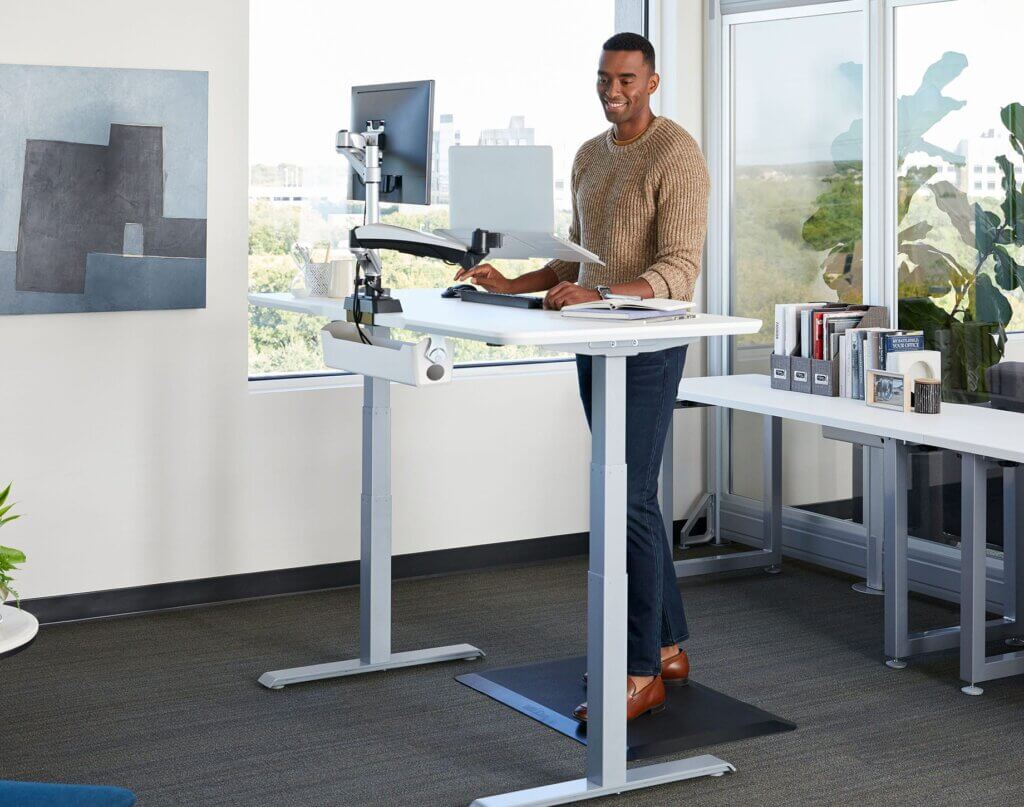
Do Standing Desks Have A Future?
As more people chose to work from home, the prevalence of back pain has become even more common, and it’s already the thing office workers complain about most, other than bad coffee. At Care for Health we have certainly noticed this increase recently! Prolonged sitting, sometimes unavoidable during a long sedentary work day or boring meeting, has been linked to various health issues. Back pain being top of the list. One option to help reduce this is the standing desk – however, there are some draw backs, they can cost a fair bit especially if adjustable, so, are standing desks worth it?
Standing Desks
In case you are not familiar or you don’t work from home, standing desks are a newer style of desk designed to give users flexibility to work while standing. Some of these desks are equipped with adjustable height settings, allowing you to switch between sitting and standing positions throughout the day. In an office it would allow several people of different heights to use the same space throughout the working week. The primary goal is to reduce the negative effects that prolonged sitting has on the body, such as back pain and reduced circulation by encouraging more movement and better ergonomics.
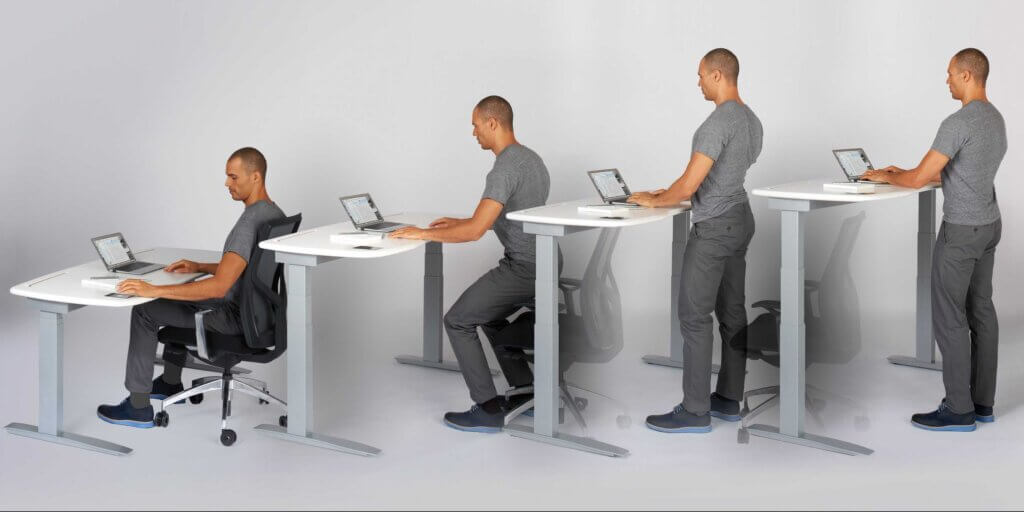
The big draw back to a standing desk is the cost. Sometimes having substantial price tags, with several factors contributing to it. High quality material for durability and engineering parts, more advanced features are sometimes available to such as electronic height adjustment, memory settings and built in cable management. Lets take a closer look at the pros and cons of a standing desk and how it might suit you to make a change.
The impact of remote work on back pain
The change or transition to remote work has brought about flexibility but has also introduced new challenges, the main one being an increased risk of back pain. The convenience of working form home often leads to individuals spending longer working in front of screen, sitting in less-than-ideal ergonomic setups (your sofa or bed are not good work spaces) – in addition, whereas employers were starting to be held accountable for their employee’s spinal health, working from home usually changes this back onto users.
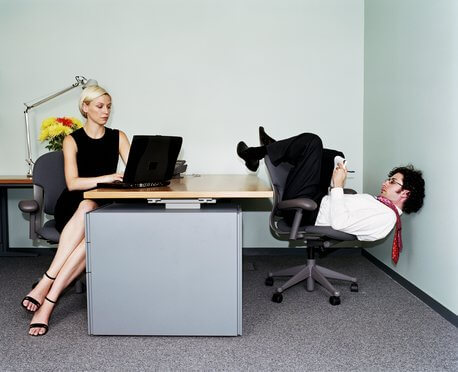
Pros of Standing Desks for Back Pain
From my point of view of being a chiropractor I can certainly see how a standing desk could help with;
Improved Posture – Too much time spent sitting causes many issues for us. One of the primary benefits of standing while working is the improvement in posture. Being slouched leads to poor spinal alignment, tightness in our lower back or neck whereas standing upright can reduce stress on the spine and contribute to better musculoskeletal health. A study conducted in 2016 found a 32% improvement in lower back pain after just a few weeks of using a standing desk.
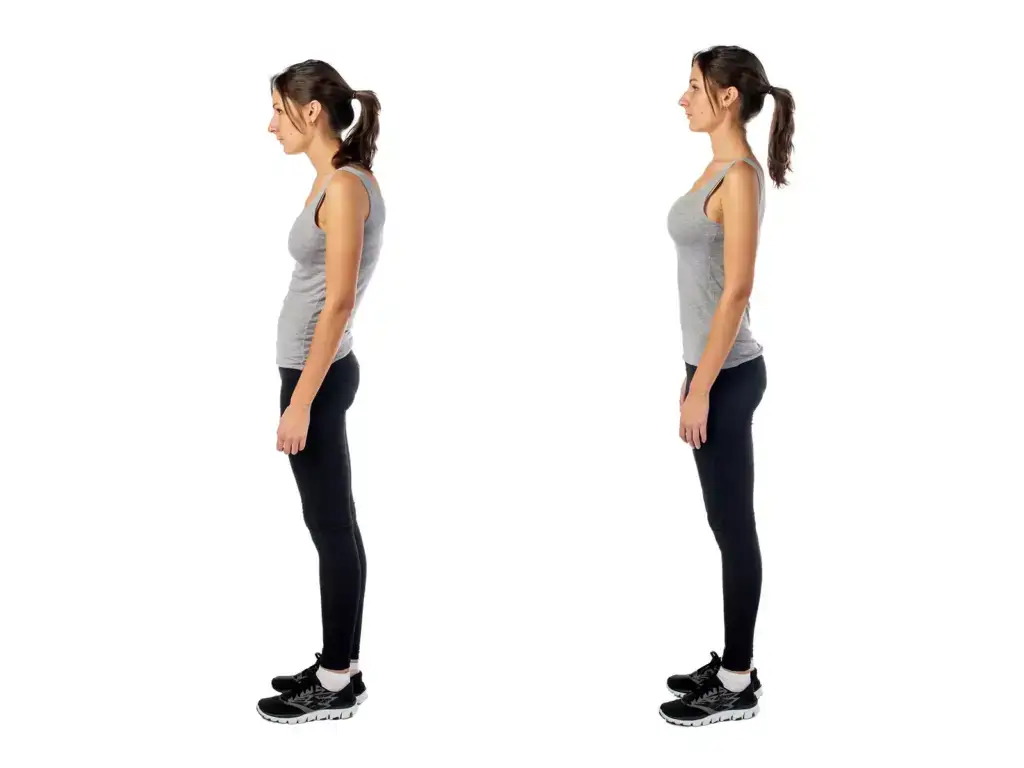
Reduced compression of the spine – Being sat for just 5-6hrs a day increases spinal compression by up to 50%! By allowing the spine to maintain a more natural position unloads the pressure and potentially mitigates back pain.

Increased physical activity – Being stood inherently means greater physical activity throughout the day. Being stood also appears to have a positive impact on reducing stress and fatigue. Individuals using the standing desk will be more inclined to move, be that stretching or taking short breaks to walk around the house. More movement means better circulation, more muscle activation and generally better well-being. Small movements consistently make a big difference.
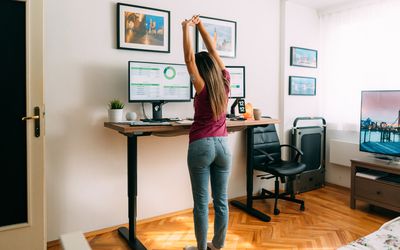
Customizable Ergonomics – As standing desks are designed to be so adjustable, they enable users to find the optimal height for their needs. It ensures the desk is aligned with the body proportions reducing the risk of discomfort or strain. Preventing and alleviating back pain. One study found that the use of a sit-stand desk reduced upper back and neck pain by 54% after just 4 weeks! Particularly keeping the screen at a good height – eyes level with the middle of the screen. Something traditional desks haven’t always been able to offer. As a guide the average 5’11” (180cm) person would have their desk about 44inches or 111cm high. With the screen positioned 20-28inches (51-71cm) away from their face.
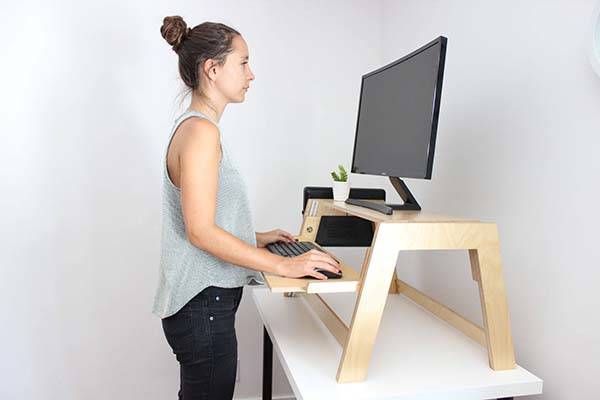
So what are the issues to consider surrounding standing desks?
Transition Period – There will be an adjustment period while you change over from having a predominantly sitting work based environment to a more standing work routine. Gradual integration and listening to your body are important in order to avoid fatigue and discomfort. Its not unheard of for people to get back pain from making a sudden a big shift in their daily habits. This is because we use different muscle to hold us upright while we stand. Take it nice and easy.
Foot and Leg discomfort – While being stood is great for the spine for the various reasons we have mentioned above, extending standing may lead to foot and or leg discomfort for some people. Wearing comfortable supportive footwear can help mitigate these issues and no, slippers don’t count! Additionally as we all should be taking breaks from being sat down, its important to take breaks while standing too. You can even buy standing mats that are specially designed to add cushioning whilst standing for long periods and may be useful if you do get sore feet or legs.
Overall standing desks are not a one-size fits all solution to your office needs. Used well with other changes to your lifestyle standing desks are a promising avenue for saving our spines, from the everyday work stress we place them under. It’s important to recognize that they are just one component of a holistic approach to back pain management. Taking breaks, stretching, staying hydrated, are also key components, and dare I say it having regular chiropractic care too, ensuring you are functioning at your best!
Luke Ullyot
Chiropractor

